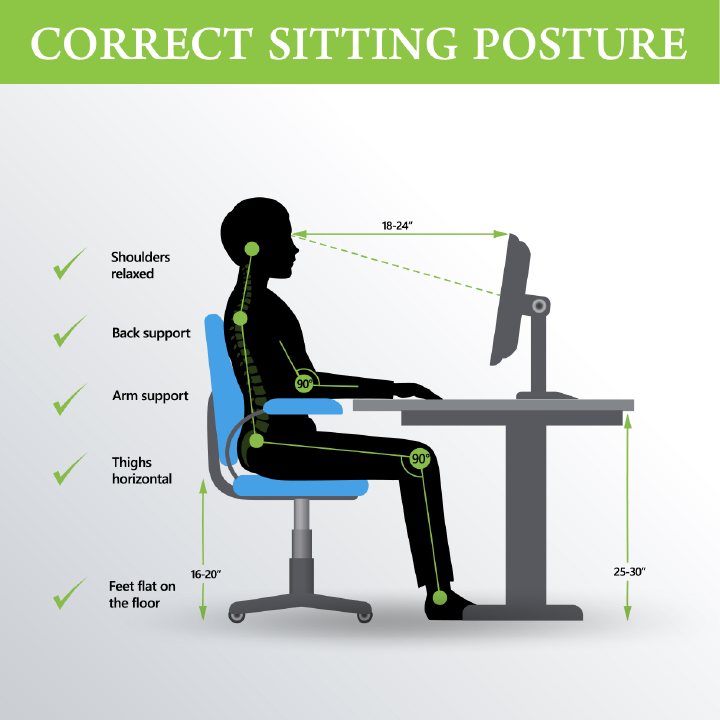Working Doesn't Have to Be a Literal Pain in the Neck
It's quitting time after a long day of hard work at your desk and your back aches, your neck is stiff, and your eyes feel like the Sahara. If this describes you, it's time to brush up on your office ergonomics and revamp your work habits so that you're working healthier.
Ergonomics is an applied science concerned with designing and arranging things to fit the human body so that people can work in a healthy, comfortable, and efficient manner. An ergonomic workspace can help prevent repetitive strain injuries that are associated with working long hours at a desk, like carpal tunnel syndrome and tendonitis.
Create an Ergonomic Workspace

The goal in creating an ergonomic workspace is to arrange everything so that your body is in a neutral position. According to the Occupational Safety and Health Administration (OSHA), a neutral body position "is a comfortable working posture in which your joints are naturally aligned. Working with the body in a neutral position reduces stress and strain on the muscles, tendons, and skeletal system and reduces your risk of developing a musculoskeletal disorder.”
According to the OSHA Good Working Positions guide and The Mayo Clinic, an ergonomic sitting position has a few key factors:
- Your spine is more or less vertical, with your head and neck in line with each other. You aren't leaning forward or craning your neck.
- Your elbows and legs are both at about 90° angles, with your forearms and thighs horizontal.
- Your hands are at or below the level of your elbows and your wrists are straight.
- Your feet are flat on the floor. If your desk is too high, your feet are on a footrest.
If you work while standing, the guidelines for keeping a neutral body position are almost exactly the same. The main difference is that you should keep your legs, torso, neck, and head more-or-less in-line and vertical.
Aside from sitting or standing in a neutral position, how you have things arranged on your desk also contributes to how ergonomic your workspace is. An improperly positioned monitor or keyboard could be a major contributor to neck, arm, and wrist pain.
- You should put your monitor 18-24" (about arm's length) away from you and at or slightly below eye level.
- Your keyboard and mouse should be close together and at the right height and distance that you can keep your arms in the correct position. If you can't maintain the proper position with your keyboard on your desk, consider using a keyboard tray.
- Things you use frequently should be close enough to you that you can access them easily without reaching, things you use occasionally should be within reach, and things you don't use often should be out of the way.
Check out how AFW works healthy »
Cultivate Healthy Work Habits
Of course, creating a healthy workplace isn't just about creating an ergonomic workspace. While sitting in an ergonomic position is important for preventing unnecessary stress and strain on your body and avoiding repetitive strain injuries, it's not the only factor in working healthfully. Studies have linked excessive sitting to increased risk for heart disease, diabetes, cancer, and even depression, according to a Runner's World article. The solution to the so-called "sitting disease"? Move more.
The article cites Stuart McGill, Ph.D., director of the Spine Biomechanics Laboratory at the University of Waterloo, who states that it is important to frequently interrupt your sedentary time and change your posture often. Lest you think this means excessive time spent away from your desk, he says that "Even breaks as short as one minute can improve your health." In a Boston Globe article, Alan Hedge, a design and ergonomics professor at Cornell University, advises people to "Sit for no more than 20 minutes at a time […] and stand in one position for no more than 8 minutes. You should also take a two-minute moving break at least twice an hour to stretch or walk around."
If you're at a loss for what to do during your movement breaks, try some stretches to loosen stiff muscles or some exercises you can do at your desk or around the office.
Working healthier by revamping your workspace to be ergonomic and adopting healthy work habits will keep you working pain-free and focused.



































